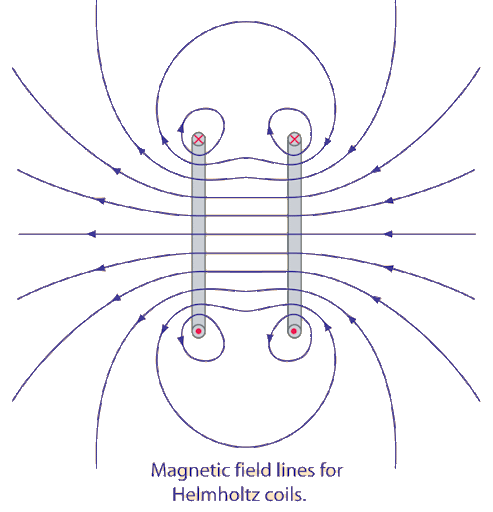Awareness Through Movement #380
Moshe gives a mini lecture in the middle of this lesson, here it is in writing:
“And so I want to tell you about an article in The American Scientist of Professor Held who gives an account of a series of experiments that he did to find out in which place of our brain, our nervous system, deals with adjustment and coordination.
Where is it done? He begins at the beginning. He tells about Helmholtz.
That already at his time was amazed at the following thing. When a person does something, he does not sense in the difficulty that his movements, his actions, are coordinated also in time, and also in space, he takes it in the correct place at the proper time. When you throw him a ball, he catches it. This we are used to. But, with Helmholtz, the problem that aroused his thinking was this.
A person of a certain age puts on glasses and the moment that he puts the glasses on, his manner of seeing with his eyes changes. He sees things clearer, better, or in a different place than before... different from before. How does this mechanism that worked thirty or forty years become used to a certain action and, in a half hour, gets used to glasses and does these actions completely fine despite that the manner of seeing is different and all the relationship of the limbs change in relation to space.
What kind of mechanism works exactly like this and that you can change it with such ease. Now, in addition to this, when a person takes his glasses off, after he went with them for two hours, at the first moment, he feels something unusual. You see that he blinks his eyes and tries to find the previous way, the usual one, which is now unusual without the glasses. You can see with everyone who has glasses.
And so, the problem is - where was this? Where is this coordination made? Where does it come from - in what place in the brain? What is possible to do there? Maybe if we know the mechanism, it may be possible to improve it. He left this problem as it is, asked the question, but did not do anything. He made experiments that were possible at his time, and that is all. Now, Professor Held brought up the problem up once again and made interesting experiments on animals and people.
He put prisms on the eyes, not regular glasses. Now, you know that prisms broadcast the rays in a manner so it is bent. For instance, if I look at a cigarette, it could be up. I see it up while it is here. If the prism is placed with the thicker part downward and if he puts different prisms on both eyes, it turns out, at the first moment the person looks at it, he sees the cigarette or thing that he want to touch in a completely other place than the one he is used to. At the first moment, he is completely confused. He does not know what to do, what to do. He gave groups of people glasses like this and had them walk for a half and hour. Surprisingly, after a halfhour of walking, they found they were able to do everything - to write, to read, to look at a watch, everything, despite this distortion that was done by the glasses.
When he took off the glasses, he found that these people, at the first moment, found that there was an adjustment that they needed to do at first because the mistake was in the opposite direction. If before, at the moment they put the glasses on, they tried to take hold of a cigarette or something. They gave them the corner of the object to take. They lifted the hand because they saw it up, and afterward, they learned that it really was down. Now, when they took off the glasses, they looked for it down below, when it really was up. The difference was the same mistake in the opposite direction.
Now, this was a thing that was taken for granted, that it would happen like this, and clearly. But, he tried to do something different. He took another group of people, put glasses on them, and had them do the movements exactly like the previous people... the same movements. Not only did they do it, but also he had somebody take their hand and move the hand to the thing, to do the same movements. They did the movements in the passive way without interfering with it. To his surprise, that he found that there was no adjustment with these people.
When they took the glasses off, they did not feel any difference. Now, this already began to be interesting. The adjustment, the coordination, is done in an unusual place. There is some connection with voluntary movement or non-voluntary. Then, he took a small cart and put a person with these glasses on the cart. Another person with the same glasses just pushed the cart. Both of them walked around the room like this and looked at all sorts of different things. One of them sat there passively, did not do anything. The other one had to do actions all the time. He had to direct the cart, to touch it, to turn it, to look where he was going, where to go. They went over this many times so it would not just be a coincidence, but so it would be clear that it would be like this.
All of the people, all of the ones that pushed the cart and did voluntary movements had the phenomena of adjustment. After a quarter of an hour, it did not matter to them if they had glasses or did not have the glasses. They did the correct, exact movements. When they took the glasses off, at the first moment, they had the same opposite feeling as the moment they put the glasses on. The others, those that sat passively in the cart - nothing happened to them - not this and not that. Afterwards, he did the same thing with cats and with small chicks - the same thing.
Whoever is interested can read it. You will find a whole row of interesting experiments. It turns out that this coordination is done by way of the attention to the voluntary movement of the body. And with them, he found out something very important. I also think that he found out something very important. In this manner, he tried to convince everybody and you know that we do this from the day that we started to work.
In other words, this idea that coordination is dependent on voluntary thought, on voluntary movements when a person relates the action, the movement, to his coordinates. In relation to his body, that he knows what changes in his body when he acts. This makes the adjustment. This is why I started with this trick. You laid down and did not do any movement. You just paid attention in a voluntary manner to the sensation in the muscles of the leg because that is what we were feeling.
This makes a difference. When you stand up, you feel a difference in the right leg, in the left leg. In other words, this is the thing that makes the adjustment. And, of course now there is a whole series of Professors because this thing is so new to scientists that the whole series of scientists began to make experiments in this direction so as to clarify, specify, and be exact with this thing. They certainly would be surprised to see that we do the same thing on one side and one becomes adjusted and the other side, no. That this is not something new - I will write something about this, that they might like to explore this.”
A bit later in the lesson he goes on to say:
“The entire right side adjusts, sense in the eye the difference between the right eye and the left, also in the face, also in the neck. The entire side will organise.
Once I hoped that we would have an institute like this,
that scientific work like this would be done here, and from "Zion would come the Torah." For now, we are doing this.
There they advertise the facts.
In another five years, I certainly will tell you of a new article that there,
they already doing it on one side.
They will know that it is possible to coordinate.
This shows that it is not in the nervous system
rather it is in the voluntary part because the other side does not change while working. There is no place in the brain that does the coordination for voluntary movements.
The place that you pay attention does the coordination,
and the other places, not.
And, of course, this will be famous in America, Russia.
It will be very interesting in every place.”
A shame that his hope for an institute to scientifically examine his method failed to eventuate, although… it does give clue to the direction he was headed with his creation.
Anyways, enjoy learning more about your self in your own ‘institution’, your body, your home, your discoveries :)
Some of my random discoveries from today, aside from being on a V-Line train today with jaw dropping views of “the West” from my window - WHEN did Footscray get filled with skyscrapers???
Here’s the lesson, enjoy learning more with your Self, through your feet!!
Keep reading with a 7-day free trial
Subscribe to MySelf.Study to keep reading this post and get 7 days of free access to the full post archives.






